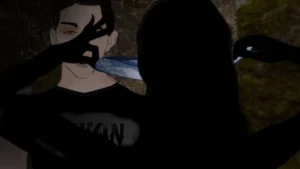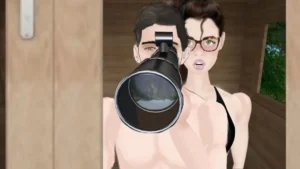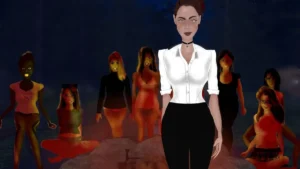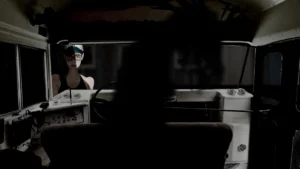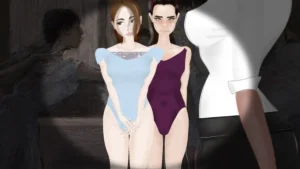
Camp Klondike
Play Camp Klondike
Camp Klondike review
Exploring Gameplay, Characters, and Narrative of Camp Klondike
Camp Klondike is an adult visual novel that immerses players in a summer camp setting where counselors navigate complex relationships, playful tension, and steamy encounters. This game stands out for its blend of narrative depth and interactive choices, allowing players to explore a variety of character-driven storylines over seven intense days. Whether you’re curious about the gameplay mechanics or the unique character dynamics, this article will guide you through everything you need to know about Camp Klondike.
Understanding Camp Klondike Gameplay and Mechanics
So you’ve downloaded Camp Klondike, ready for some summer camp fun and romance, but you’re wondering what you’ve actually signed up for? 🤔 I remember my first time booting it up – I was expecting a simple click-through story, but what I found was so much more immersive. The Camp Klondike gameplay is a masterclass in how to blend narrative depth with player agency, creating an experience that feels uniquely yours.
This isn’t a passive movie; it’s your story to shape. The core of the experience is built on classic visual novel mechanics, but it elevates them with meaningful interaction at every turn. Let’s unpack exactly how you play, how your choices matter, and what makes this summer camp adventure so unforgettable. 🏕️
How Does Camp Klondike Play?
At its heart, the Camp Klondike gameplay loop is beautifully simple and deeply engaging. You’ll spend your days navigating the picturesque camp grounds, clicking on locations to advance the story and trigger scenes with the charming cast of characters. The primary visual novel mechanics involve reading through beautifully illustrated dialogue and narrative, but the magic happens when the game pauses and presents you with a decision.
Pro Tip: Don’t just rush through locations. Take your time! Clicking on background elements often reveals fun little environmental details and sometimes even special, one-off dialogue lines that add to the world-building.
What truly sets the Camp Klondike gameplay apart is the seamless integration of its systems. Your character interaction isn’t separate from exploration; it’s the direct result of it. Choosing to visit the lake might lead to a serene moment with one character, while heading to the mess hall could trigger a comedic disaster with another. This creates a natural flow where you’re constantly guiding the narrative through your daily choices.
The game provides a clear journal and relationship tracker, so you’re never lost. You always know which story threads are active and how you’re progressing with each character. It’s this structure within freedom that makes the Camp Klondike experience so compelling.
| Gameplay Mechanic | Primary Function | Impact on Story |
|---|---|---|
| Dialogue Choices | Shape your personality & relationships | Directly influences character affinity and unlocks unique story paths |
| Location Exploration | Trigger story events and find characters | Determines which narrative branches you encounter and when |
| Mini-Games | Provide active participation in camp activities | Boosts character moods, unlocks special scenes, and grants narrative advantages |
| Relationship Stats | Tracks your bond with each character | Gates specific story endings and romantic outcomes |
Interactive Choices and Branching Outcomes 🛤️
This is where Camp Klondike truly shines. The interactive choices you make are far from superficial; they are the engine of the game’s renowned branching narrative. I learned this the hard way on my first playthrough. I thought I was just being nice by agreeing to help a character with their chores, but that single decision locked me out of an entire afternoon event with someone else, altering the trajectory of my entire camp stay!
The branching narrative system is incredibly sophisticated. It’s not just about “Character A likes this” or “Character B dislikes that.” Your choices build a cumulative profile of your camper persona. Are you the reliable helper, the mischievous prankster, or the empathetic listener? The game remembers, and characters will react to your established reputation.
Here’s what makes the interactive choices so powerful:
- They Feel Natural: Choices are rarely black and white. You’re often picking between two equally valid, but different, approaches to a situation.
- Consequences are Delayed: A choice in Day 2 might not pay off until Day 6, making the world feel alive and responsive to your actions.
- They Define Relationships: Every conversation is a chance to deepen a bond. The quality of your character interaction is directly tied to these moments.
This complex web of cause and effect is what creates the game’s multiple endings. You’re not just picking an ending from a menu; you’re weaving it, thread by thread, through hundreds of small decisions. Replaying to see a different outcome doesn’t feel repetitive—it feels like exploring a completely new story. 🌟
Mini-Games and Exploration Features 🎯
Just when you think you’ve got the Camp Klondike gameplay figured out, it surprises you with its delightful mini-games in Camp Klondike. These aren’t throwaway distractions; they are thoughtfully designed activities that reinforce the camp theme and directly impact your relationships.
I absolutely adored the stargazing charades mini-game. It wasn’t just a test of memory; it was a cute, quiet moment that perfectly captured the feeling of a summer night, and doing well significantly boosted my connection with the character I was with. Similarly, the mixology challenge at the camp’s social event was a hilarious and tense sequence where my performance became a major talking point for days afterward.
The exploration features are your gateway to everything. The camp map is your playground, and deciding where to go and when is a core part of the strategy. The exploration features are minimalistic but meaningful—you click a location, and the story unfolds. This simplicity keeps the focus on the narrative and character interaction without bogging you down in tedious pixel-hunting.
Key mini-games in Camp Klondike and their roles:
- Stargazing Charades: A memory-based game that fosters intimate, one-on-one bonding.
- Mixology Challenge: A timing and sequence game that can make you the hero or the fool of the party.
- Canoe Race: A fun, competitive activity that can shift character dynamics.
These elements are woven so seamlessly into the Camp Klondike gameplay that they never feel like a chore. They are moments of active participation that make you feel less like a reader and more like a camper, living out your own unique story under the summer stars. The balance is perfect, ensuring the heart of the experience—the rich character interaction and compelling branching narrative—always remains the top priority. ✨
Ultimately, understanding the Camp Klondike gameplay is understanding that you are in the director’s chair. Your interactive choices craft the narrative, your engagement with the mini-games in Camp Klondike deepens your bonds, and your use of the exploration features guides the pace. It’s a beautifully designed system that respects your intelligence and rewards your curiosity, making every playthrough a personal and memorable journey.
Camp Klondike offers a unique blend of narrative-driven gameplay, rich character interactions, and immersive storytelling set against a nostalgic summer camp backdrop. Its thoughtful relationship-building systems and branching choices create a personalized experience that balances playful tension with emotional depth. Whether you’re drawn to its strategic gameplay or the compelling character arcs, Camp Klondike invites you to explore a world where every decision shapes your summer adventure. Ready to dive in? Start your journey and discover what secrets the campfire holds.


